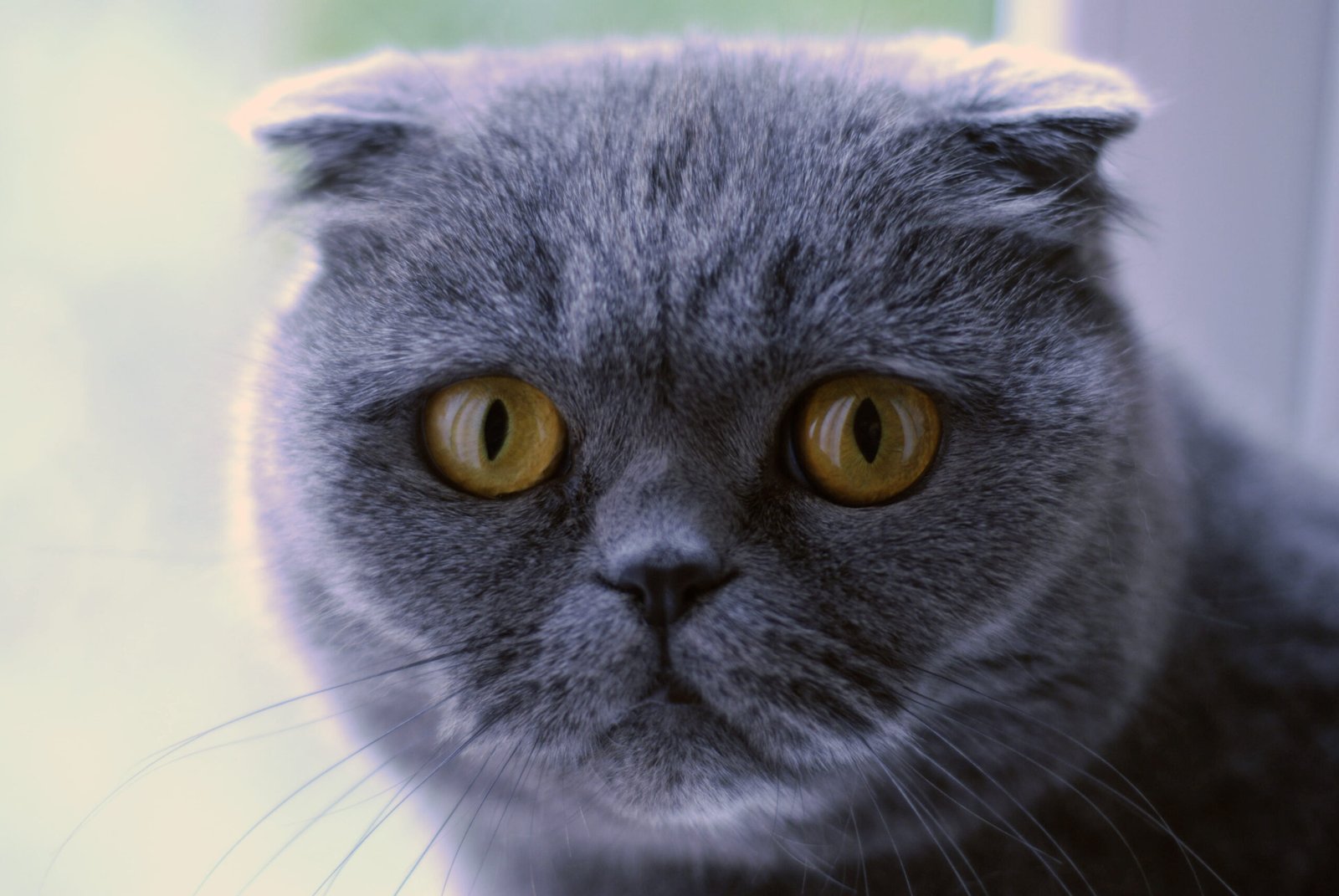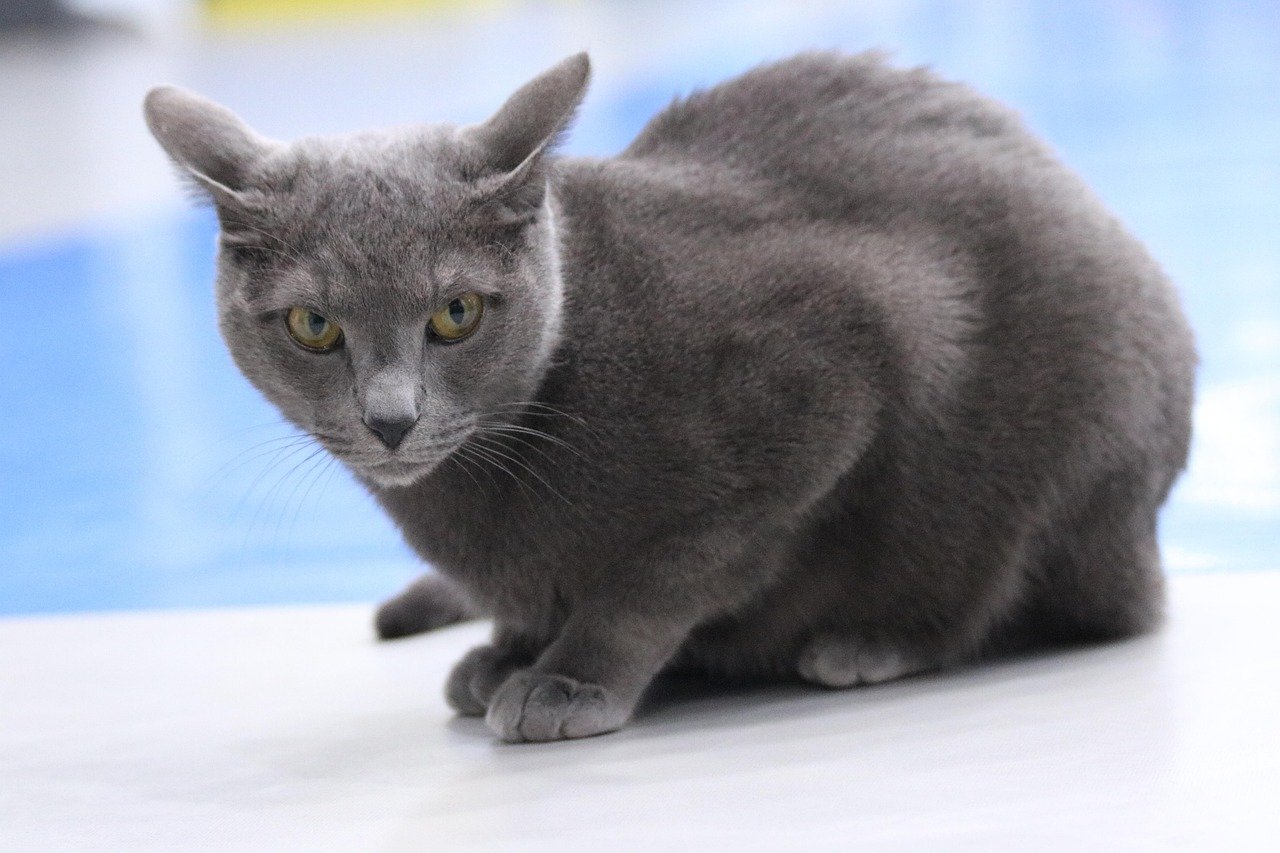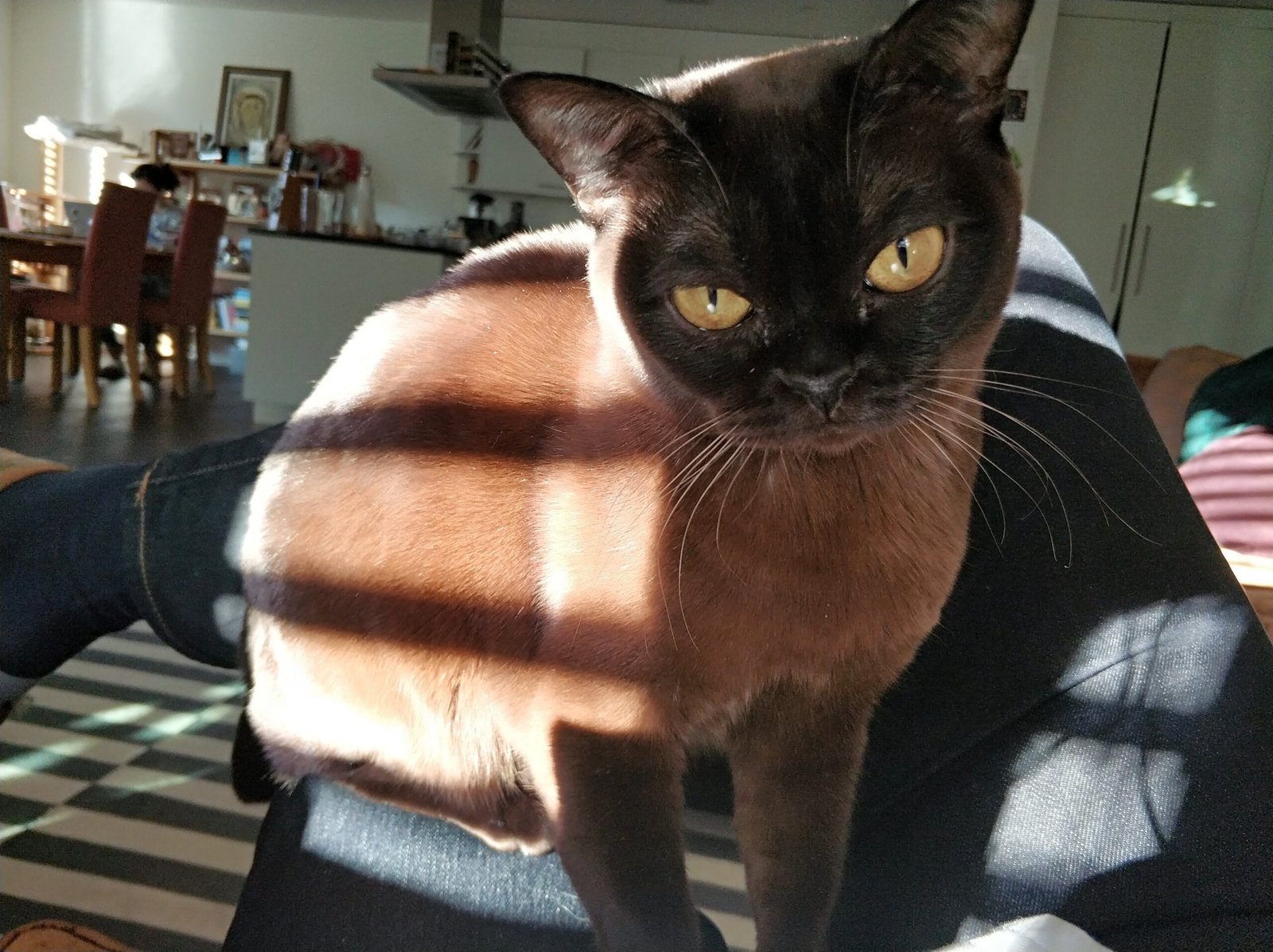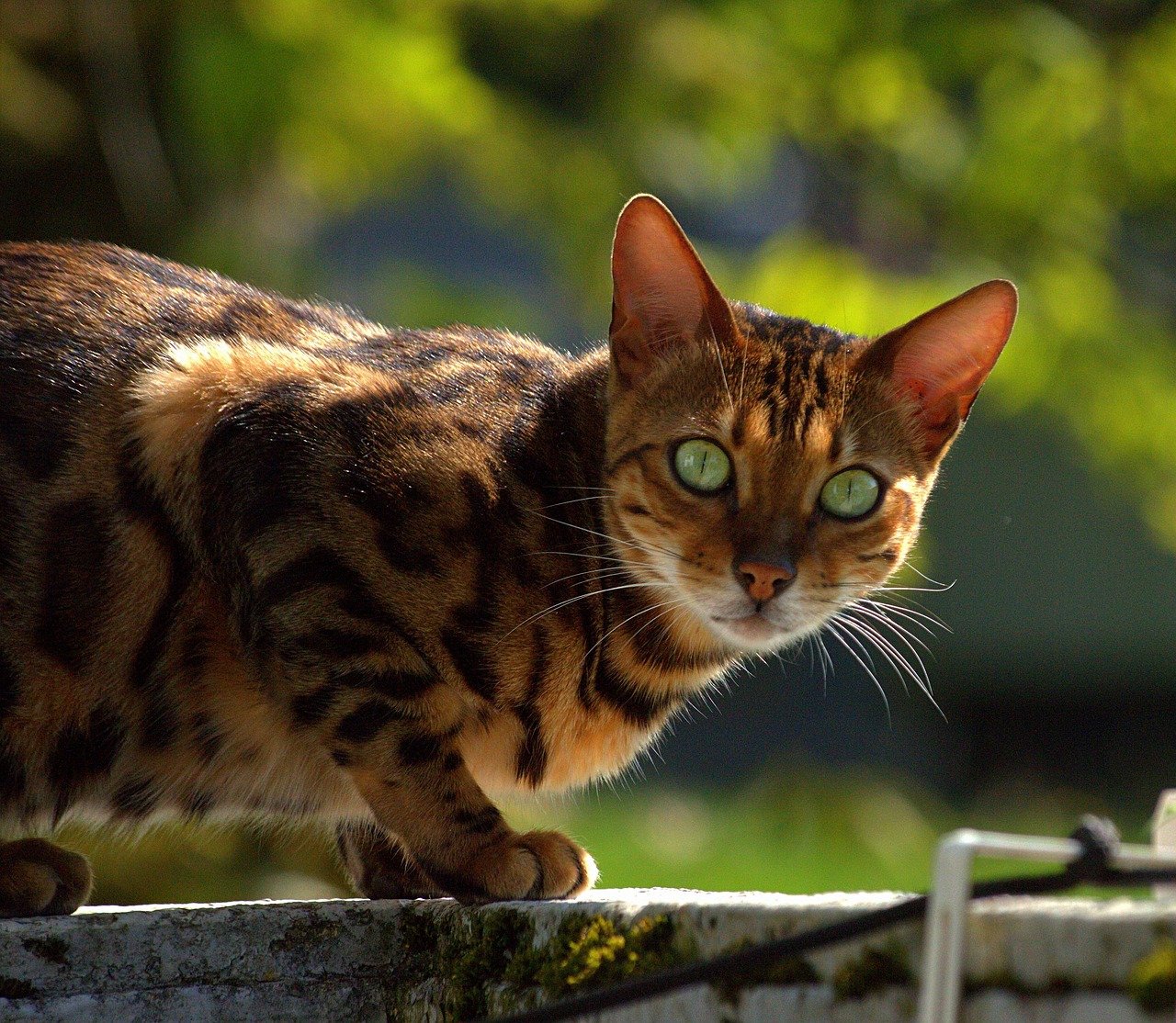Cats might not speak our language, but some breeds are masters at getting their point across—if you’re really paying attention. From expressive eyes to chirpy meows and subtle tail flicks, these 12 cat breeds are pros at nonverbal (and sometimes very vocal!) communication. Breeds like the Siamese and Maine Coon practically hold conversations, while others like the Ragdoll use body language to express affection or discomfort. These cats form deeper bonds by “talking” in ways that go beyond purring. The more tuned in you are, the more you’ll understand their moods, needs, and quirks. It’s like learning a new language—one filled with head tilts, soft trills, and a whole lot of love.
Siamese: The Chatty Companion
If you’ve ever met a Siamese cat, you likely remember their distinctive voice. Siamese cats are famous for their talkative nature, and they don’t shy away from letting you know what’s on their mind. They use a range of sounds—from soft chirps to loud, drawn-out meows—to express everything from joy and curiosity to frustration. These cats will often follow their humans from room to room, carrying on a conversation as if you speak fluent feline. Their expressive blue eyes and animated faces help convey their feelings even without words. Living with a Siamese means never feeling lonely, as they thrive on interaction and expect you to listen. If you’re not paying attention, they’ll make sure you do with another round of vocal acrobatics!
Maine Coon: The Gentle Giant Storyteller
Maine Coons are known for their impressive size and even more impressive personalities. While they are not as loud as Siamese cats, Maine Coons have a unique way of communicating with an endearing mix of chirps, trills, and soft meows. They’ll look you in the eye and “talk” when they want food, playtime, or simply a bit of attention. Their fluffy tails and expressive faces add to their storytelling ability, making it easy to understand exactly what they need. Maine Coons are highly social and often form strong bonds with their families, sometimes placing a gentle paw on your arm as if to say, “Listen to me.” Their subtle yet clear communication style makes them unforgettable companions.
Bengal: The Expressive Adventurer

Bengal cats are a whirlwind of energy and curiosity, and their communication skills match their lively personalities. These spotted beauties use a variety of vocalizations—including yowls, mews, and chirps—to express their excitement or dissatisfaction. Bengals will often “talk back” if you scold them, and they’re not shy about asking for more playtime or attention. Their body language is just as expressive: a flick of the tail, perked ears, or dramatic leaps onto your lap all mean something in Bengal-speak. Observant owners quickly learn the difference between a happy Bengal’s “look at me!” chirp and an impatient “why aren’t you playing with me?” call. Living with a Bengal is like having a chatty, athletic roommate who always wants to share their latest discovery.
Oriental Shorthair: The Drama Queen
Oriental Shorthairs are closely related to Siamese cats and share their tendency toward dramatic displays of communication. These sleek, elegant cats have a voice that can range from soft and sweet to surprisingly loud and demanding. If you ignore an Oriental Shorthair, they will let you know with persistent meows, headbutts, and even playful nips. Their large, expressive ears and almond-shaped eyes make it easy to read their moods. Whether they’re asking for food, affection, or a warm spot in your bed, they do it with flair. Owners often joke that living with an Oriental Shorthair is like starring in a never-ending soap opera, with each episode featuring new ways their cat tries to capture their attention.
Scottish Fold: The Soft-Spoken Charmer

Scottish Folds may not be the chattiest cats, but they have a gentle, persuasive way of making their feelings known. These round-faced, folded-ear wonders use soft mews, purrs, and subtle gestures to communicate. If they want cuddles or treats, they might simply curl up beside you and gaze up with those huge, soulful eyes. Sometimes, a Scottish Fold will gently tap your hand or nudge you with their nose to get your attention. Their calm and affectionate nature means they rarely cause a fuss, but if you pay attention, you’ll notice that they’re always telling you something. Their understated approach to communication is a lesson in the power of quiet charisma.
Sphynx: The Bold Attention-Seeker
Sphynx cats, with their hairless bodies and oversized ears, might look a little otherworldly, but their communication style is very down-to-earth. These cats are bold, energetic, and absolutely crave attention. Sphynx cats will meow loudly, chirp, and even trill to get you to notice them. They use their paws like hands, reaching out to touch or pat you when they want interaction. Their expressive faces and constant need to be close make them easy to read—if a Sphynx wants something, there’s no mistaking it! Whether they’re snuggling under the covers or demanding playtime, their message is always clear and impossible to ignore.
Abyssinian: The Curious Commentator

Abyssinians are among the most curious and intelligent cat breeds, and they use every tool at their disposal to communicate. While they aren’t the most vocal, their body language is incredibly expressive. An Abyssinian will follow you from room to room, observing every move, and will often “comment” with soft chirps or mews. If they want your attention, they’ll make it known with a gentle tap or by weaving between your legs. Their large, alert eyes and upright ears are always tuned in to what you’re doing. Abyssinians love being involved in household activities, and their communication is a mix of quiet sounds and unmistakable actions that keep owners constantly engaged.
Turkish Van: The Playful Persuader
Turkish Vans are known for their love of water and playful antics, but they’re also excellent communicators. These cats have a soft, melodic voice that they use to express excitement or curiosity. When they want to play, they’ll let you know with a series of chirps, purrs, and sometimes playful meows. Turkish Vans are also experts at using body language—tail flicks, bouncy steps, and gentle headbutts are all part of their vocabulary. If you ignore their invitations to play, they might nudge you with a wet paw, just to remind you who’s in charge. Living with a Turkish Van is like having a playful child who always finds a creative way to get your attention.
Russian Blue: The Subtle Storyteller

Russian Blues are the definition of “quiet but clear” communicators. These elegant, silver-coated cats tend to be reserved with strangers but deeply affectionate with their families. Russian Blues communicate with soft, melodic meows and a purr that seems to vibrate with happiness. They also use their gaze and body posture to let you know how they feel. If they want affection, they’ll sit quietly beside you, staring up with those striking green eyes until you get the hint. Russian Blues may not be as demanding as some breeds, but their subtle, heartfelt communication is easy to understand for those who pay attention.
Burmese: The Sociable Sweetheart

Burmese cats are the life of the party, always eager to interact and be part of the family. Their voices are soft yet persistent, and they’re not shy about asking for attention, food, or playtime. Burmese cats often use a combination of vocal and physical cues, such as gentle headbutts, weaving around your legs, and even climbing onto your lap uninvited. Their expressive eyes seem to sparkle with emotion, making it easy to understand what they want. Burmese cats form strong bonds with their humans and thrive on communication, making every day feel like an ongoing conversation.
Japanese Bobtail: The Joyful Messenger

Japanese Bobtails have a reputation for being cheerful and communicative. These cats are known for their unique “bobbed” tails, but it’s their lively personalities that really shine. Japanese Bobtails are highly vocal, often using a range of chirps, trills, and meows to share their feelings. They’re especially good at letting you know when they’re happy, excited, or simply want to play. Japanese Bobtails also use their tails to communicate, waving them like little flags to express curiosity or excitement. Living with a Japanese Bobtail is like having a tiny, furry optimist who’s always eager to share their joy.
Tonkinese: The Social Butterfly

Tonkinese cats are a delightful blend of Siamese and Burmese traits, resulting in a highly communicative and affectionate breed. They’re known for their soft, musical voices and their love of social interaction. Tonkinese cats will often “talk” to their humans, using a mix of meows, chirps, and purrs to express everything from hunger to happiness. They’re also physically demonstrative, often jumping onto laps or rubbing against legs to get attention. Tonkinese cats thrive in busy households, where they can participate in daily life and keep the conversation going. Their expressive faces and engaging personalities make it easy to know exactly what they’re thinking.
If you’ve ever felt like your cat is trying to tell you something—you’re probably right! These 12 breeds are especially gifted at expressing their thoughts and feelings in unique ways, from gentle chirps to meaningful stares. Tuning in to their signals not only helps meet their needs but also deepens your bond. Communication with a cat may not be loud, but it’s certainly clear if you’re listening. So next time they “talk,” be sure to pay attention—you might be surprised by what they’re saying!

Esther is from India; the heartbeat of South Asia, holding a Master’s degree in Zoology and a postgraduate diploma in Animal Welfare. Her enthusiasm for animal welfare drives her passion and dedication to working for animals, ensuring their well-being, and advocating for their rights. With a solid academic background and hands-on experience, she is committed to making a positive impact in the field of animal welfare. In her free time, she enjoys embroidery and sewing. As a Chennaite from Tamil Nadu, Esther loves Bharathanatyam, an Indian classical dance form.






